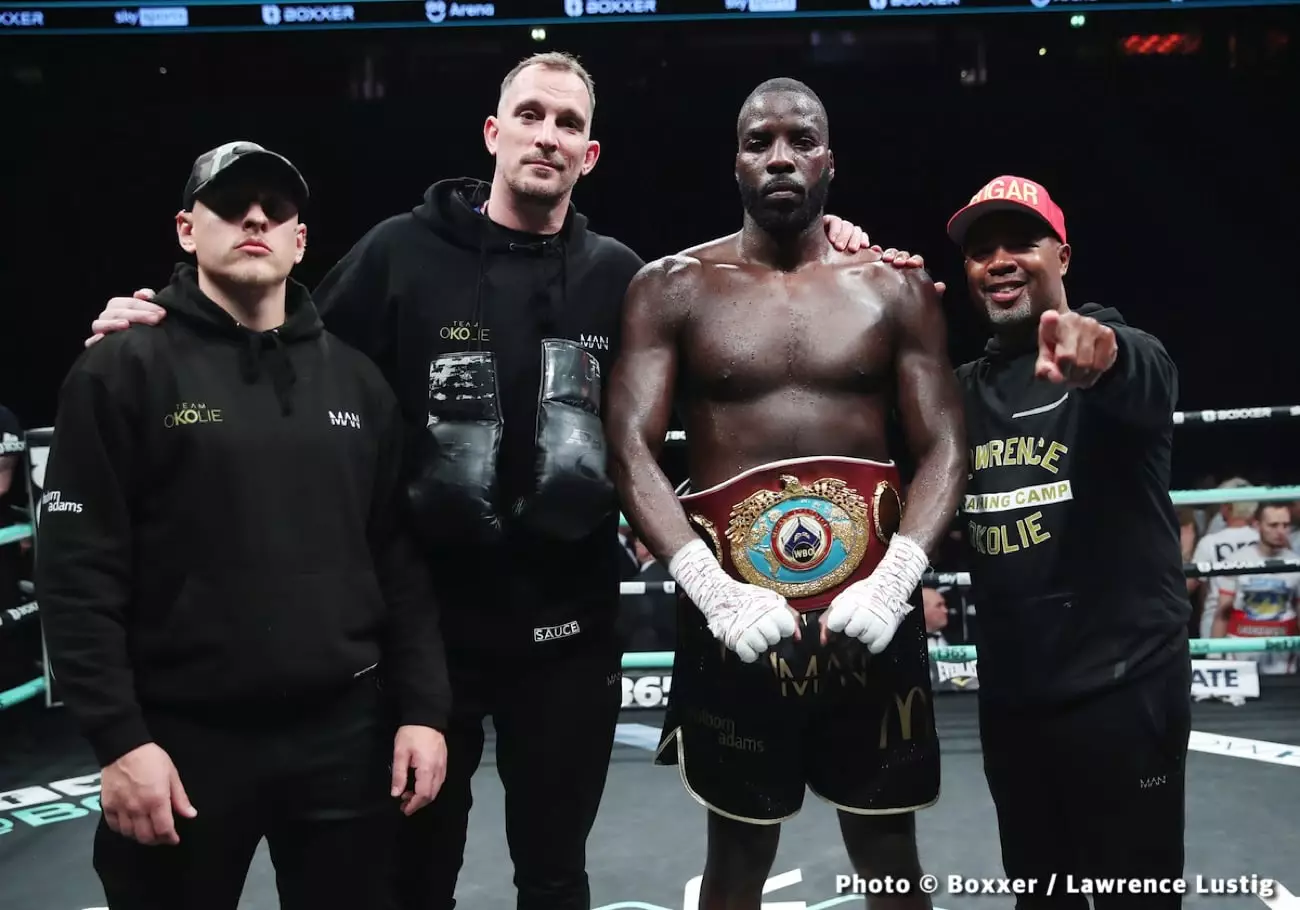By Maestro Amílcar Barnett M.
The heavyweight division has always been a stage for larger-than-life characters, thrilling rivalries, and jaw-dropping displays of athleticism. However, recent discussions around potential matchups highlight an unusual trend: the return of aging fighters who are seemingly past their prime. From Lawrence Okolie’s potential bout against the venerable Luis Ortiz to whispers of an Ike Ibeabuchi return, the heavyweight scene appears to be entering a curious phase that leaves fans questioning the logic behind these matchups.
Lawrence Okolie, traditionally known for his achievements at cruiserweight and bridgerweight, has made headlines by contemplating a move to heavyweight. This shift raises eyebrows, especially considering Okolie’s potential matchup against Ortiz, a fighter who many believe is on the decline due to age and inactivity. At 45, Ortiz seems to be a relic from an era when boxing’s physical demands were met with youthful vigor. The question remains: what does Okolie stand to gain from such a fight? A win over an aging Ortiz may not solidify his standing in the heavyweight hierarchy; in fact, it risks holding him back from facing true title contenders who can elevate his career trajectory.
Okolie’s strategy in pursuing this fight appears questionable. Fans, who are increasingly aware of the sport’s nuances, will not be easily swayed by victories over fighters considered near their competitive end. The heavyweight division demands more than just a series of wins; fighters must establish their legitimacy and skill against contemporaries. Would a victory over a slow and aging Ortiz truly resonate with fans and critics alike?
As if the heavyweight landscape couldn’t get any stranger, the name Ike Ibeabuchi has emerged, sparking interest and skepticism simultaneously. Once a formidable force in the ring, Ibeabuchi vanished from the sport due to a series of personal and legal issues, remaining inactive since 1999. Rumors of a potential confrontation with Kenzie Morrison—a young fighter carrying the legacy of his father, Tommy Morrison—raised eyebrows across the boxing community. How can a fighter who has been out of the ring for over two decades hope to compete at a level necessary for such a significant event?
While Morrison is indeed an impressive athlete at 34 years old, the notion of Ibeabuchi, now 51, trying to reclaim his position in the boxing world seems absurd. One must question the motivations behind this matchup: is it nostalgia, desperation, or perhaps a troubling fetishization of bygone eras? The potential bout promises a spectacle laden with strange dynamics, but it risks overshadowing the promising rise of younger talent hungry for opportunity.
It’s not just the names of Ortiz and Ibeabuchi that evoke memories of the past; figures like Oliver McCall and even Mike Tyson are also beckoning for attention. McCall, now at 59, has taken up his gloves once again. After earning a KO win in a recent matchup, he’s expressed interest in facing off against the likes of Jake Paul, an unabashed spectacle in modern boxing. Meanwhile, whispers of a Tyson vs. Holyfield bout loom ominously over the sport as well.
While the thrill of witnessing legends in the ring is undeniable, this pattern raises critical concerns: Are age and experience becoming the defining factors in boxing, or are they merely masking the sport’s need for fresh talent? Matches between aging fighters may generate buzz, but they often come hand-in-hand with diminished athleticism, raising ethical questions about fighter safety and the integrity of the sport.
The current state of heavyweight boxing teeters on a precarious balance between nostalgia and the necessity for evolution. As fans, we must grapple with the reality that while these colossal names may draw crowds, the boxing world deserves to prioritize potential and skill over mere curiosity.
The gamble of resurrecting past glories speaks to a deeper issue: the heavyweight division must cultivate new talent and rivalries to keep the sport alive and thriving. Emphasizing the need for high-stakes matchups among emerging fighters will enrich the boxing landscape, ensuring that the future is not overshadowed by the echoes of the past. As we move forward, it is vital for promoters, fighters, and fans alike to advocate for a focus on the next generation of heavyweights—fighters who can forge their own legacies rather than merely stepping into the shoes of those who have come before. This shift will ultimately define the future of heavyweight boxing, paving the way for a vibrant, competitive landscape.


Leave a Reply